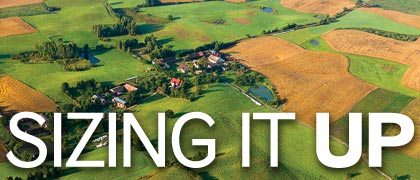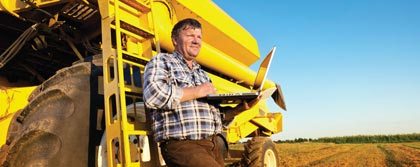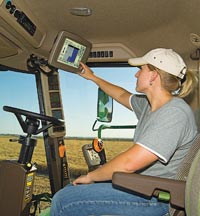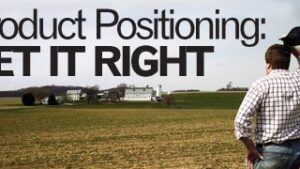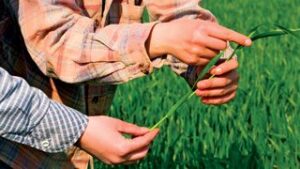The average size of farms in the United States continues to increase, and while basic seed sales tactics remain the same no matter who the customer is, there are some techniques to keep in mind when dealing with large-scale farm operations and managers.
The most recent data on farm size in the United States, which comes from the 2007 Census of Agriculture, show that concentration of production in agriculture has increased in the last five years. In 2002, 144,000 farms produced 75 percent of the value of U.S. agricultural production. In 2007, the number of farms that produced that same share of production declined to 125,000.
Another way of looking at farm size is the share of agricultural production produced by farms with more than $1 million in sales. In 2007, farms in this sales class produced 59 percent of U.S. agricultural production, while in 2002 farms in this sales class produced only 47 percent of all production.
“There is no doubt that farm numbers in the U.S. continue to decrease and the average size of farms continues to increase,” says Rod Osthus, president of R.C. Thomas Company. “Farming is no different from every other industry in the United States.·Virtually all of business segments either have consolidated or are consolidating at some level, some industries more than others.”
What impact does larger farm size have on the seed-selling process and the seed industry in general?
Leading today’s large-scale growers involves teaching them how to get more out of the new technologies they are using.
Lead, Don’t Manage, Large-Scale Growers
Relationship management is critical when working with large farm operations; however, it is more complex than selling to one farmer who makes all the decisions himself. The sales process when dealing with larger farm operations can involve more than one buyer or strong influencers, particularly if there is a professional buyer, technical specialists such as agronomists or a farm manager involved in the purchase, says Scott Downey, associate director of the Center for Food and Agricultural Business at Purdue University. He says trust is important in every relationship, regardless of size; however, the definition of the relationship with large farms is typically a business relationship, not just a social relationship.
“The complexity of large farm decision-making requires more planning and coordination,” says Downey. “That means longer time horizons, more formality in communication and more up-front investment in building the relationship.”
Osthus agrees that managing the relationship is the area that differs most when working with large growers versus smaller growers. “The key here is to get rid of the word manage and insert the word lead. No one is going to be able, or be allowed to, manage a large grower. They won’t let you,” explains Osthus. “They are large because they love to control everything they do.”
Osthus says the reason large growers are so good at managing themselves is because they are controlling things they know a lot about. However, “leading means taking someone where they don’t know they need to go and that’s what salespeople must do with every farmer, but especially the large ones,” he adds.
The problem is, most salespeople center their leadership around the products they sell, but that doesn’t work with large-scale farmers because they go right to price, explains Osthus. “Leading large, 21st century farmers means bringing them information they don’t have or, if they do have it, they don’t know how to use it to raise more bushels. They need to be taught how to get more out of the newest technologies they are using, but most salespeople are just there to sell them products, programs or cheaper prices.”
But barring genetics that perform noticeably better than all other competitors, Downey says that the ability for seed sellers to differentiate themselves is harder with a large farm that uses a lot of information. And sometimes it is the small things that actually gain a larger operator’s attention and lead the way. “Large farms often really appreciate having advanced genetics before they’re commonly available and like having on-farm trials that demonstrate performance on their own farm,” he says.
When it comes to relationships with large farmers, Downey adds that it is important to remember there are aspects of both leadership and traditional components of management (analysis, planning, implementing, and monitoring) that are useful with sophisticated customers. “The complexity of logistics associated with serving a large complex customer requires management skills. Penetrating layers of management within a company requires planning. Salespeople in any industry who want to work with large complex customers must be good managers, technical experts and good business people—in addition to being friendly and trustworthy.
“There was a time, not long ago, when the differences in complexity between the largest farms and the smallest could still be handled by the same approach. I don’t believe that’s true today. Selling to large complex businesses requires the ability to lead people inside the buyer’s organization AND inside the seller’s own organization, since serving large customers is often a team effort,” he says.
But Selling is Still Selling
You’ve brought the larger farmer information he didn’t know and led him in the door, now what? When it comes time for the actual sale, Osthus says there is no real difference between selling to a larger farmer versus a small farmer. “The first thing we tell salespeople is to take the word ‘sale’ out of every sales call, regardless of the size of the operator, because you are not there to get an order, you are there to get the grower to like you so you can get an appointment to come back,” says Osthus.
Second, Osthus says to stop thinking about farm size once you are ready to make a sale. “Just because he is a larger farmer doesn’t mean he is smarter or more advanced than the sales rep. The sales rep knows a lot more about raising the products he or she is selling than the farmer does. The sales rep is there to help him raise more bushels than ever before on the acres he is farming,” Osthus eplains.
For Shannon Latham, vice president of Latham Hi-Tech Seeds, farm size doesn’t factor in at all during the sales process. “At Latham Hi-Tech Seeds, our focus is on the customer—regardless of the size of the operation. We take time to meet with farmers, visit with them about their goals, as well as glean information on management practices and soil types,” explains Latham. “We know that it’s not enough to just offer great products; product placement and management is key to maximizing yield. That’s why we like to work closely with our customers to help ensure they’re getting the best seed product to fit a given situation.”
|
When it comes to relationships with large-scale growers, aspects of leadership and traditional components of management are useful with sophisticated customers. |
Crop Production Versus Farm Size
While there are some key differences when managing relationships with larger operators, many seed sellers and industry professionals believe trends in farm numbers and in size of farmers might not be as important as what is happening with trends in crop production itself.
“Tillable farmland continues to decrease in the United States which means every acre needs to become significantly more productive in order to feed the world’s growing population in the coming years,” says Osthus. “So the real question is: are farmers who are growing in size working to do a better job of farming larger acreages, or are they simply doing what many farmers have done in the past—trying to lower production costs by spreading them over more acres?”
New varieties and new technologies themselves will not increase yields enough to keep up with the demand for food. But farmers have an opportunity to increase production by at least twofold by changing how they raise those varieties, explains Osthus. “And that is exactly what farmers need to do on every acre, regardless of size. In theory, farmers should not expand the size of their operations until they have nearly doubled production on the acres they are currently farming. It is totally within their capabilities because it is already being done. Everyone’s future depends on 21st century farmers’ abilities to produce more pounds, bushels and tons on the same amount of land or less. That fact concerns me far more than fewer farmers running the land.”
Future of Farming
As large-scale farmers grow their managerial ability, they can continue to leverage investments in people, land and machinery to become more efficient. “Very few farms today have formal process controls, six sigma or quality management that help companies eke out even more profit,” says Downey. “It’s hard to think that there wouldn’t continue to be growth in farm size. However, as this segment grows it will likely be important to define these farm operations on factors other than size. Behavioral segments may be much more relevant as we learn to tailor value propositions.”
And what will happen to the traditional family farm as we used to know it? “I hope and believe that there will always be a place for family farms,” says Downey. “Health care costs and other issues may mean that we redefine this segment. Many will work off farm in order to have benefits. The ability to scale machinery and the passion for farm lifestyles, along with market opportunities for specialty and local crops, raises the potential for these farms to continue to exist. Companies who want to serve this group will need to adapt to a different set of needs. There will clearly be a broad continuum of small acreage farms to large acreage farms.”
Successful seed companies, and sales reps, will be the ones who can adapt to the different sets of needs the quickest going forward. “Working with large farmers is not about managing them as customers. They are already good managers,” says Osthus. “Instead, it means leading them. When you lead them, they follow because I haven’t met a large farmer yet who didn’t want to learn something new so he could continue to grow his business.”
Julie McNabb


